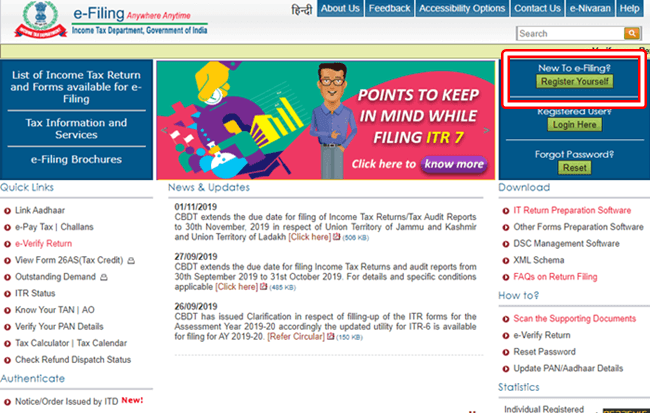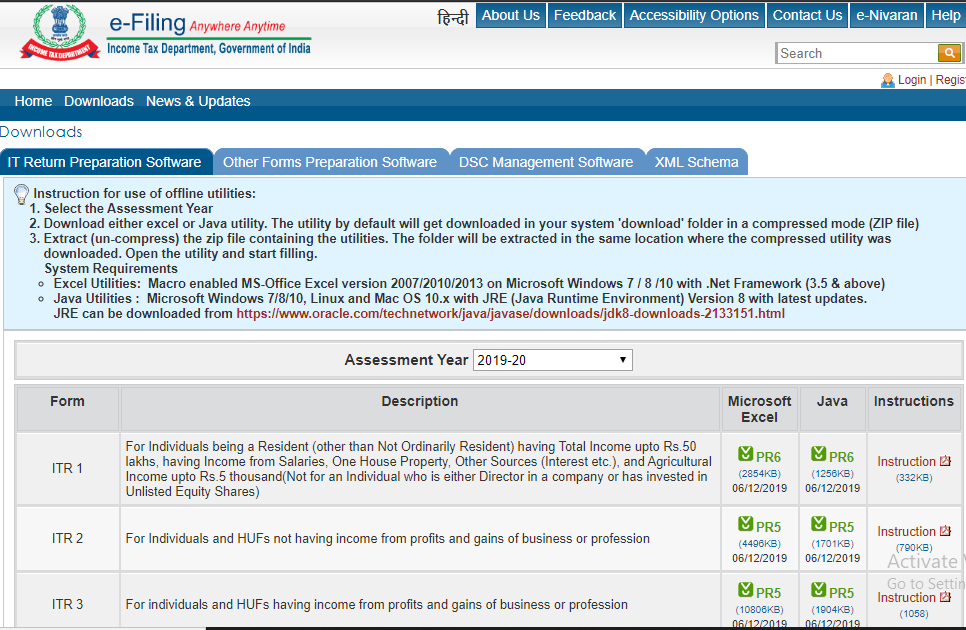Step-By-Step Guide to EPFO Registration
Employee Provident Fund (EPF) is a pension plan for all the salaried employees in public and private sectors regulated and administered by Employee Provident Fund Organization (EPFO). Employees regularly contribute to their EPF accounts, which helps them prepare for retirement, pay off loans faster, and even pay for their children's college tuition.

Organizations who fall under this scheme must register to ensure that their employees don't lose their right to a provident fund and contribute to their overall well-being.
PF Registration Eligibility
The following categories of companies are eligible for EPF registration:
- A company or factory that employed more than 20 employees in the last financial year.
- Companies that attain a strength of 20 members should register with EPFO, or else they have to face the penalties.
Companies with fewer than 20 employees are not required to register for the EPF scheme. However, they can register voluntarily.
PF Registration Online
The EPFO accepts registrations either in person at the EPFO office or through their website. Nowadays, the most popular and convenient approach is to go online.
Here is the process for registering for EPF online as an employer:
- Visit the official website of the EPFO portal
- Click on the Establishment Registration option
- Download Manual will give you more details on the registration process
- Click on Sign Up to create your account
- Enter the requested information (Name, Email, Phone Number, etc.)
- Click on the Registration For EPFO-ESIC option
- Click Apply for New Registration that is available on the new page
- Enter all the mandatory details like establishment details, contact persons, e-contacts, employment details, branch/division, etc
- Registration summary will get displayed on the dashboard
- Click on the Submit option
- It will prompt you for Digital Signature
- Click on Digital Signature and register
- Once all the steps are done, you will receive a mail with registration confirmation
Employers can register EPF offline by visiting their local EPFO office.
Talk to our investment specialist
Document Required for EPF Registration
Employers need to download the registration form via the EPFO official website and register themselves by providing the following information:
- Company name
- Branch details
- Employer identity proof
- Company registration date
- Total number of employees
- Address proof of the registered office (rent or sale Deed)
- Service provided by the business
- Legal details of the company
- Partners and directors details
- Total wages granted to the employees
- First sale bill details
- Balance Sheet details
- Bank related details
- Permanent Account Number (PAN) details
- Employee details (Aadhar, PAN, contact number, designation etc)
Employees Under EPF Scheme
Here are the employees that come under the EPF scheme:
- Employees who work part-time
- Employees who work full-time
- Employees working from home
- Employees under contract
- Consultants who work full time
The employees that don't get covered under this scheme are,
- Employees who are retired
- Employees who settled abroad permanently
- Trainee
- Interns
EPF Registration Benefits
Protects from Risk
The main benefit of providing fund registration is that it covers both employees and their dependents from risk, which refers to an employee's retirement, illness, or death.
Unique Account
An employee is not required to create a fresh account whenever he joins a new company. EPF account is continuous and transferable.
Insurance Benefits
All the EPF account holders are linked with the Employee Deposit Linked insurance Scheme (EDLIS), which deducts 0.5% of their salary.
Emergency Funds
The EPF funds can be used for the employee's needs in the event of a marriage, higher education, or other unforeseen circumstances.
Pension Funds
The employer also needs to contribute the EPF fund, around 12% of the employee's monthly salary. The Employee Pension Scheme (EPS) receives 8.33% of the employer's contribution, which helps the employee save for retirement.
EPF Scheme - Contribution Rate
The employer and the employee's contribution rates based on the employee's strength are listed below.
Employees More Than Twenty
Here are the contribution rates for the company with more than 20 employees.
Contribution Rate of Employer The concerned employer is supposed to contribute 12% of the employee's basic wage and Dearness Allowance (DA) as their share of contribution.
Contribution Rate of Employee The employee is expected to contribute 12% of his basic monthly wage.
Employees Less Than Twenty
Below are the companies that need to contribute 10% of the employee's basic salary along with the Dearness Allowance(DA).
- An organization that has less than 20 employees count.
- Board for Industrial and Financial Reconstruction (BIFR) recognized Sick Industrial Company.
- Businesses operating in the categories like jute, beedi, coir, and guar.
- A company that has incurred losses equivalent to its Net worth at the end of a Fiscal Year.
Delay and Penalty in EPF Registration
If a company delays in registering for the EPF, the EPFO will impose a penalty, which is detailed in the table below:
| Sr.No | Delay in Months | Percentage of Penalty (P.A) |
|---|---|---|
| 1 | Upto 2 months | 5 % |
| 2 | 2 to 4 months | 10% |
| 3 | 4 to 6 months | 15% |
| 4 | > 6 months | 25% |
Additional Details
- If an employer has multiple organizations, registration should be done for all of them.
- An employer can only maintain an employee's EPF account to make deposits.
- The employer is not allowed to reduce the employee's compensation to manage the EPF payment.
- Employee and employer contributions to the EPF are not subject to taxation.
- The registration process for the EPF takes between 4 and 5 working days.
Conclusion
The EPF registration is a safe and secure scheme launched by the government of India. Registration of an individual employee's provident fund is a critical aspect of a company's financial operations. This helps your organization build credibility and also your employees feel more fulfilled in their professions. The provident fund helps employees save money for their retirement as well as helps them feel comfortable about Investing their money in case there is some financial uncertainty.
All efforts have been made to ensure the information provided here is accurate. However, no guarantees are made regarding correctness of data. Please verify with scheme information document before making any investment.











